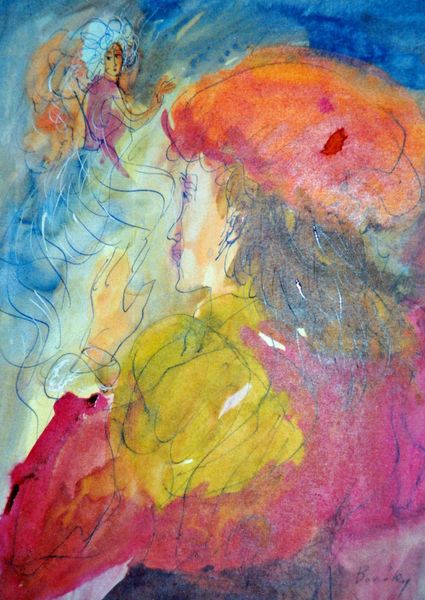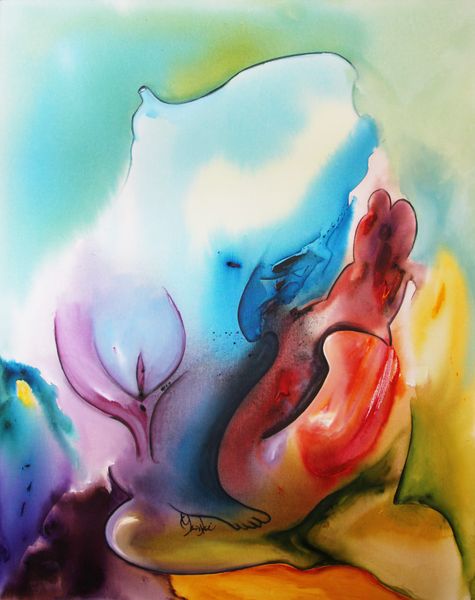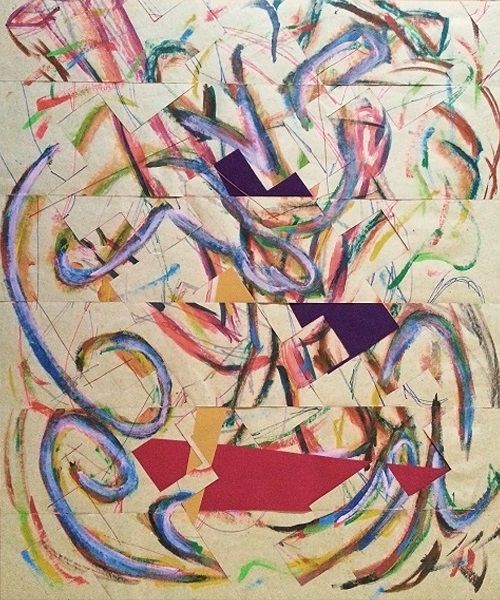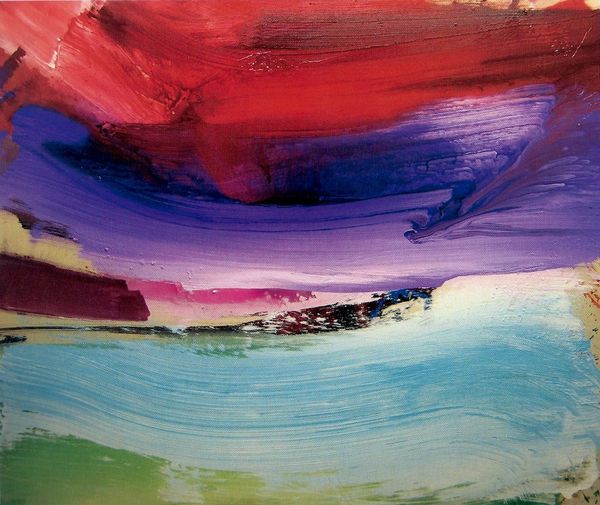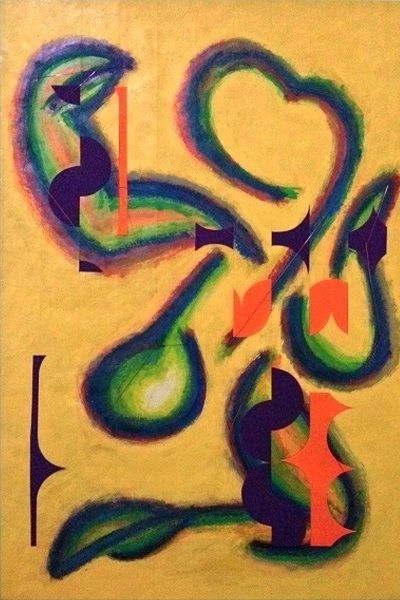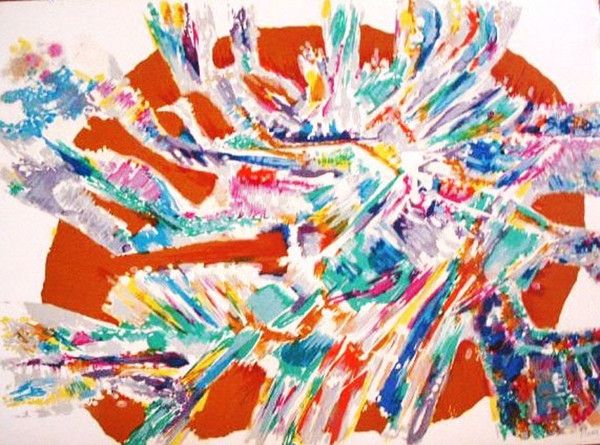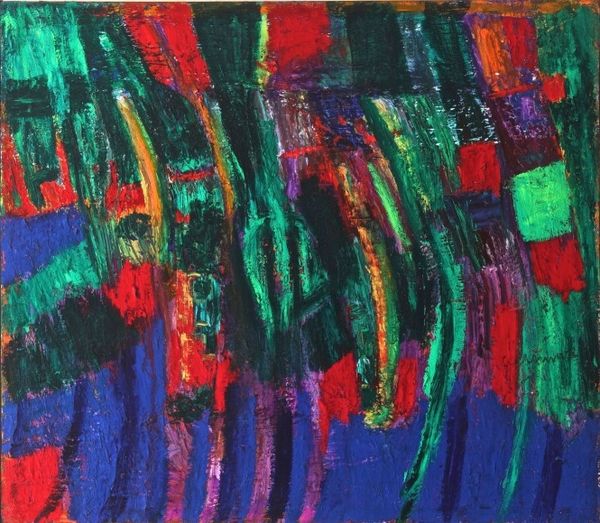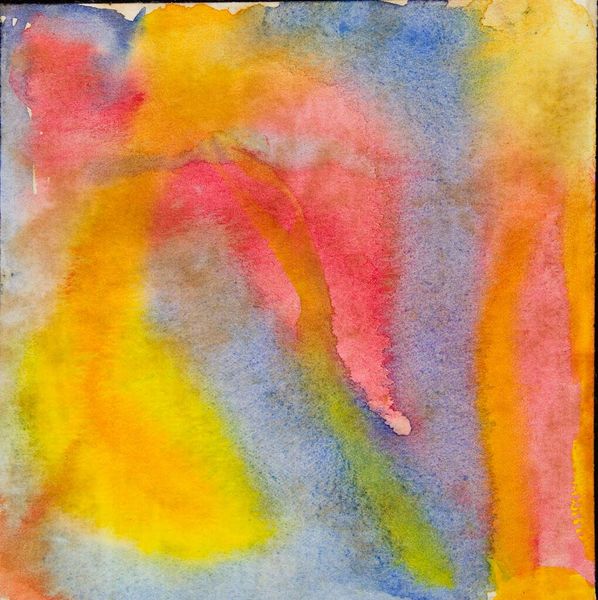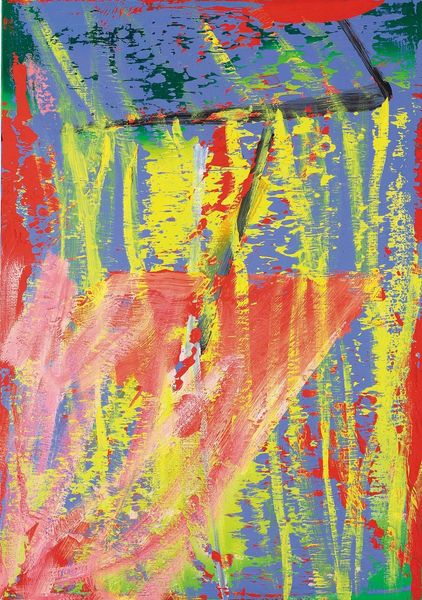
Copyright: Dan Christensen,Fair Use
Curator: Let's discuss Dan Christensen's "Serpens," created in 1968. It's a vibrant example of his early experimentation with color field painting, executed in acrylic on canvas. Editor: My first impression is one of whimsical chaos. These vibrant lines, seemingly sprayed across the canvas, evoke a sense of playful spontaneity. Is there any order underlying this perceived randomness? Curator: Absolutely, Christensen, emerging in a period of intense societal upheaval, used the canvas to explore freedom and challenge established artistic norms. These seemingly uncontrolled lines actually follow a structural logic, an aesthetic decision rebelling against the monochrome rigidity of much earlier abstract expressionism. This painting allows one to question how art reflected and, perhaps, instigated broader social change. Editor: That context is important. Ignoring its historical place, I find the layering of these chromatic strands utterly captivating. Look at how the interplay of color generates a sense of depth, with certain lines receding and others leaping forward, a careful deployment of hues like pink, green and yellow. The balance is exquisitely subtle. Curator: And considering the role of institutions like the Museum of Modern Art, which heavily promoted Abstract Expressionism, Christensen’s diversion offered an alternative. He questioned the canon, much like the youth movements questioned established power structures. It marks a fascinating dialogue between the individual artist and the prevailing cultural narratives. Editor: For me, it's that quality of pure optical sensation that resonates. Each line carries such palpable energy. The artist allows the viewers to enjoy the sheer pleasure of looking, creating an experience that's both exhilarating and strangely meditative. Curator: Ultimately, appreciating art involves both perspectives: decoding the social fingerprints etched into its creation, and experiencing the formal relationships. It requires seeing both the forest and each beautiful tree. Editor: A very nice insight to take with us! The ability of formal technique and social relevance working together really encourages a full interpretation of works of this kind.
Comments
No comments
Be the first to comment and join the conversation on the ultimate creative platform.
